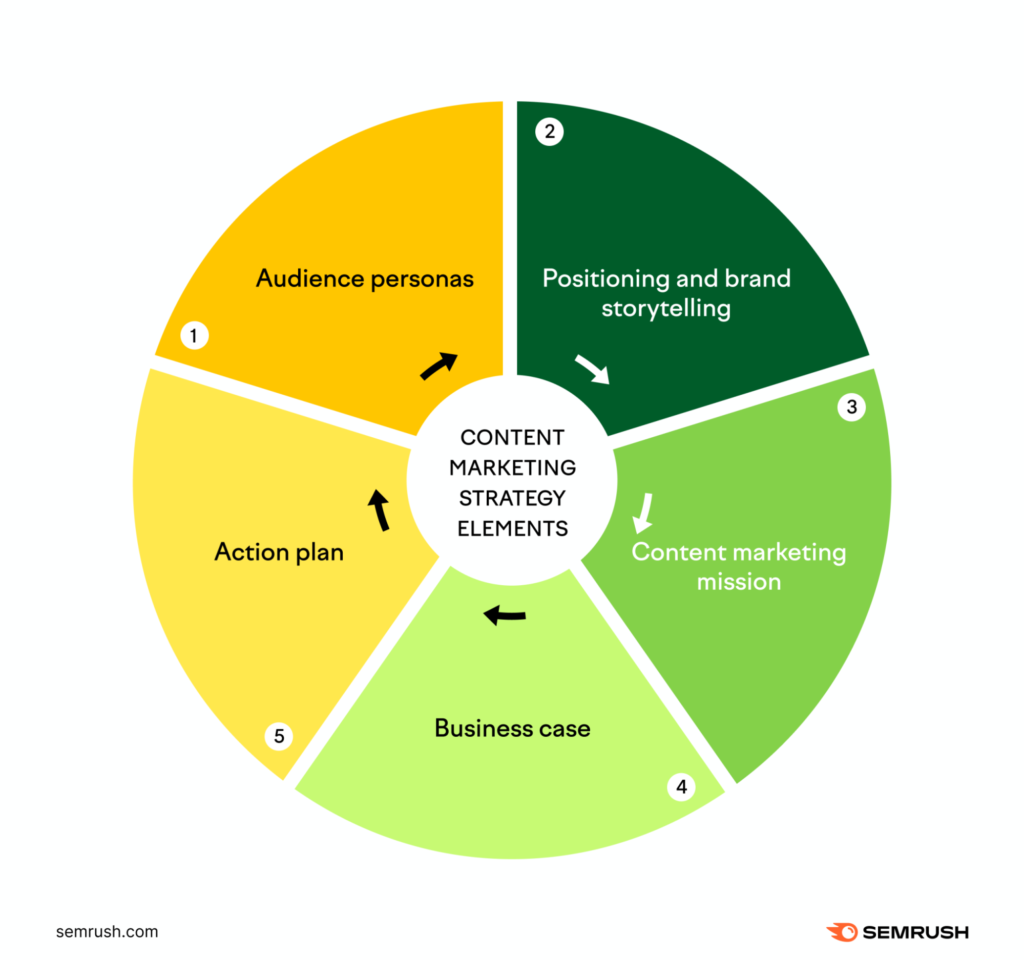
Introduction
In the ever-changing digital landscape, businesses have many marketing channels and techniques to reach their target audience. Digital and content marketing are prevalent. Both fields have different purposes and traits, despite their widespread application.
Businesses must distinguish between digital and content marketing to establish targeted strategies. This article contrasts these approaches’ objectives, channels, and metrics. Knowing these contrasts can help businesses succeed with digital and content marketing.
Core Differences
Digital and content marketing are independent but interconnected techniques in the digital age. Businesses must understand their underlying distinctions to create effective and targeted marketing strategies.
- Digital marketing: employs paid advertising, email marketing, social media marketing, and SEO to promote items and services. Its main objectives are leads, sales, and brand awareness..
- Content marketing: to attract and keep a specific target audience by creating and distributing valuable, relevant, and engaging content. It provides education, information, and thought leadership to generate leads and convert them.
Digital marketing targets potential customers with targeted promotions and advertising, while content marketing builds relationships, provides value, and establishes trust through useful and engaging material.
Key Objectives
The primary objectives of digital marketing and content marketing differ significantly, reflecting their distinct approaches to marketing.
- Digital marketing: focuses on driving measurable results that directly contribute to business revenue. Its primary goals include:
- Generating leads and increasing sales conversions
- Increasing website traffic and engagement
- Building brand awareness and establishing a strong online presence
- Content marketing: aims to nurture relationships and build trust with a target audience. Its primary objectives include:
- Educating and informing potential customers
- Establishing thought leadership and building brand credibility
- Generating leads and driving conversions indirectly through valuable content
Digital marketing emphasizes short-term, ROI-driven efforts, while content marketing emphasizes brand growth and customer involvement. Businesses need both methods to create a successful marketing plan.
Channels and Techniques
Digital marketing and content marketing utilize distinct channels and techniques to achieve their respective objectives.
Digital marketing channels:

- Paid advertising (e.g., Google Ads, social media ads)
- Email marketing
- Social media marketing
- Search engine optimization (SEO)
- Influencer marketing
Content marketing channels:
- Blog posts and articles
- Videos
- Infographics
- Webinars
- Podcasts
Digital marketing techniques:
- Keyword research and optimization
- Content creation for landing pages and ads
- Email list building and segmentation
- Social media engagement and community building
- Data analysis and campaign tracking
Content marketing techniques:
- Content strategy development
- Content creation and curation
- Content distribution and promotion
- Social media content sharing
- Influencer outreach and collaborations
Marketing goals, audience, and resources determine channel and tactic selection. Effective marketing efforts combine digital and content marketing.
Measurement and Analysis
Measuring the success of digital marketing and content marketing campaigns is crucial to optimizing strategies and demonstrating ROI. Different metrics are used to evaluate the effectiveness of each approach:
Digital marketing metrics:

- Website traffic and engagement (e.g., page views, bounce rate, time on page)
- Lead generation and conversion rates
- Return on investment (ROI)
- Cost per acquisition (CPA)
- Customer lifetime value (CLTV)
Content marketing metrics:
- Content consumption and engagement (e.g., website traffic, social media shares, video views)
- Lead generation and conversions
- Brand awareness and reach
- Thought leadership and industry influence
Regularly collecting and evaluating this information helps marketers recognize successes and adapt efforts. Businesses may guarantee their marketing efforts are working by matching measurements with goals.
Integration and Collaboration
While digital marketing and content marketing have distinct objectives and techniques, they are not mutually exclusive. In fact, integrating these two approaches can lead to synergistic results.
Benefits of integration:
- Enhanced lead generation: Content marketing can generate valuable leads that digital marketing campaigns can nurture and convert into customers.
- Improved brand building: Content marketing helps establish brand credibility and thought leadership, which can support digital marketing efforts to drive brand awareness and engagement.
- Increased ROI: By aligning digital marketing and content marketing strategies, businesses can optimize their marketing spend and maximize ROI.
- Seamless customer experience: Integrating these approaches creates a cohesive customer experience, ensuring that customers receive consistent and valuable messaging across all touchpoints.
Collaboration strategies:
- Develop a content calendar that aligns with digital marketing campaigns.
- Repurpose content across different channels to maximize reach and impact.
- Use digital marketing channels to promote content and drive traffic to content assets.
- Track and analyze the performance of integrated campaigns to identify areas for improvement.
Businesses may construct a comprehensive and effective marketing plan that generates results and fosters consumer relationships by integrating digital and content marketing.
Conclusion
Effective and targeted marketing tactics require businesses to distinguish between digital and content marketing. Digital marketing prioritizes ROI, while content marketing prioritizes brand growth and customer engagement. Both techniques use different channels, procedures, and metrics.
Digital and content marketing may improve lead generation, brand building, ROI, and customer experience. Businesses should use these two approaches in a comprehensive marketing plan for success and growth.
Remember, great marketing requires finding the right mix and using digital and content marketing to interact with your target audience, build relationships, and convert.

